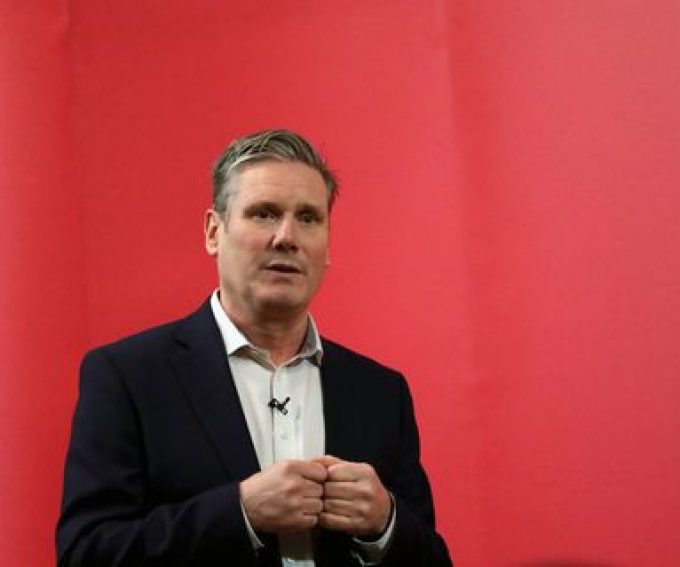NYK signs up for direct air carbon capture scheme
Direct Air Carbon Capture and Storage (DACCS), derided as one of the least efficient possible ...
FDX: ABOUT USPS PRIVATISATIONFDX: CCO VIEWFDX: LOWER GUIDANCE FDX: DISRUPTING AIR FREIGHTFDX: FOCUS ON KEY VERTICALFDX: LTL OUTLOOKGXO: NEW LOW LINE: NEW LOW FDX: INDUSTRIAL WOESFDX: HEALTH CHECKFDX: TRADING UPDATEWMT: GREEN WOESFDX: FREIGHT BREAK-UPFDX: WAITING FOR THE SPINHON: BREAK-UP ALLUREDSV: BREACHING SUPPORTVW: BOLT-ON DEALAMZN: TOP PICK
FDX: ABOUT USPS PRIVATISATIONFDX: CCO VIEWFDX: LOWER GUIDANCE FDX: DISRUPTING AIR FREIGHTFDX: FOCUS ON KEY VERTICALFDX: LTL OUTLOOKGXO: NEW LOW LINE: NEW LOW FDX: INDUSTRIAL WOESFDX: HEALTH CHECKFDX: TRADING UPDATEWMT: GREEN WOESFDX: FREIGHT BREAK-UPFDX: WAITING FOR THE SPINHON: BREAK-UP ALLUREDSV: BREACHING SUPPORTVW: BOLT-ON DEALAMZN: TOP PICK

Arriving at COP29 this week, UK prime minister Keir Starmer has unveiled a ‘nationally determined commitment’ (NDC) for an 81% cut in emissions, compared with 1990 levels, by 2035 – a target said to be unachievable without massive contributions from the transport sector.
He said: “The UK has a huge opportunity to get ahead here, when it comes to renewables – that’s why I’m encouraging as much investment as I can when it comes to carbon capture, when it comes to hydrogen, when it comes to offshore wind.
“Now is the time for the private sector to start paying their fair share in relation to these commitments.”
Today the UK grid generates nearly 20% of its power from on- and offshore wind, 12% from nuclear and 43% from natural gas plants, with solar power managing around 10%. However, during a particularly breezy half-hour last November, wind managed an astonishing 69% contribution.
Emission levels in 1990 were close to 50% higher than they are today, creating some leeway for Mr Starmer to “show leadership”.
But there is a problem. Most of the UK’s emissions reductions over the past 25 years have been due to a change in electricity supply: from almost entirely coal power with some oil in 1990, to zero-coal, abundant renewable energy and gas power today.
Some work can be done to reduce the country’s overall usage of energy. Electrifying processes currently fossil-fuelled, such as switching domestic heating from gas boilers and cookers to electric heat pumps and induction hobs, would swap extremely inefficient processes for more efficient ones, increasing the amount of overall energy in the system.
Unfortunately, finding the remaining 31% of Mr Starmer’s target will be much more difficult than the 50% gain so far. Decarbonising parts of a centralised power grid with new turbines and solar panels, is relatively straightforward, compared to developing the renewable generation capacity needed to support the electrification of cars and trucks.
Air, however, poses by far the biggest challenge. Simply generating enough SAF biofuel for flights leaving the UK would require more farmland in the British Isles than exists. And due to the inefficiency of power-to-x fuels, if the energy produced by new wind and solar farms is to be devoted to the production of aircraft fuels, less than 5% of the energy they produce will eventually be used for anything at all.
This coincides with the findings of a study last week that showed the carbon footprint of private jet flights grew 49% between 2019 and 2023. The super-rich are “using these aircraft as taxis”, said research lead Professor Stefan Gossling, of Linnaeus University in Sweden, pointing out that almost 5% of the flights were less than 50km, and almost half were less than 500km.
“If somebody’s flight emits in one hour as much as an average human being emits in a year – just to watch a soccer game – then perhaps it shows those people think they are outside the standards we have as a global community,” he added.
Meanwhile, demand for air cargo continues to grow from new sectors, with Chinese e-commerce firms Shein and Temu together requiring 88 B777 freighter flights every day and Amazon Prime Air conducts 202 daily flights.
While the target has only 31% to go, it will be by far the hardest to reach.
The Loadstar’s coverage of COP29 is sponsored by EVERGREEN LINE: leading the development of a sustainable global container transportation system.
To find out more about EVERGREEN LINE’s sustainability strategy please click HERE.

Comment on this article